样式: 排序: IF: - GO 导出 标记为已读
-
Automating Research in Business and Technical Communication: Large Language Models as Qualitative Coders Journal of Business and Technical Communication (IF 2.109) Pub Date : 2024-04-09 Ryan M. Omizo
The emergence of large language models (LLMs) has disrupted approaches to writing in academic and professional contexts. While much interest has revolved around the ability of LLMs to generate coherent and generically responsible texts with minimal effort and the impact that this will have on writing careers and pedagogy, less attention has been paid to how LLMs can aid writing research. Building from
-
Using Generative AI to Facilitate Data Analysis and Visualization: A Case Study of Olympic Athletes Journal of Business and Technical Communication (IF 2.109) Pub Date : 2024-04-04 Emily Barrow DeJeu
The ability to work with data is an important skill for students enrolled in technical and professional communication programs, but students with limited mathematical and computer programming literacies might find it difficult to do basic data analysis or customize data visualizations. This article examines the extent to which ChatGPT can make data analysis and visualization more accessible for students
-
-
Comparing Student and Writing Instructor Perceptions of Academic Dishonesty When Collaborators Are Artificial Intelligence or Human Journal of Business and Technical Communication (IF 2.109) Pub Date : 2024-04-01 John R. Gallagher, Kyle Wagner
It remains unclear if perceptions of academic dishonesty concerning artificial intelligence writing technologies (AIWTs) present new challenges or if they reflect prior, non-AI concerns. To structure this problem, we used a randomized control survey experiment. We compared student ( n = 603) and instructor ( n = 312) attitudes toward dishonesty in collaborations involving humans versus AIWT in 10 writing-related
-
Can Artificial Intelligence Robots Write Effective Instructions? Journal of Business and Technical Communication (IF 2.109) Pub Date : 2024-03-28 Johndan Johnson-Eilola, Stuart A. Selber, Eric J. York
The authors analyze the ability of ChatGPT to generate effective instructions for a consequential task: taking a COVID-19 test. They compare the output from a commercial prompt for generating these instructions to those provided by the test manufacturer. They also analyze the input, the prompt itself, to address prompt-engineering issues. The results show that although the output from ChatGPT exhibits
-
Exploring Artificial Intelligence Tool Use in a Nonprofit Workplace Journal of Business and Technical Communication (IF 2.109) Pub Date : 2024-03-25 Andrew Hillen
This case study offers examples of the use of artificial intelligence (AI) writing tools at a small nonprofit workplace dispute resolution center. It explores the limits and strengths of these AI tools, as well as the mediation field's concerns around using AI as a replacement for mediation work. Further, it explores the implications of AI tool use for the ethos of the writer and the AI tool itself
-
Preparing Future Technical Editors for an Artificial Intelligence-enabled Workplace Journal of Business and Technical Communication (IF 2.109) Pub Date : 2024-03-25 Jennifer C. Mallette
How should instructors adapt technical editing courses to account for generative artificial intelligence (AI)? This article addresses what generative AI means for technical editing pedagogy. While AI tools may be able to address rote editing tasks, expert editors are still needed to provide accessible, ethical, and justice-oriented edits. After reviewing impacts of generative AI on editing praxis,
-
Content Analysis, Construct Validity, and Artificial Intelligence: Implications for Technical and Professional Communication and Graduate Research Preparation Journal of Business and Technical Communication (IF 2.109) Pub Date : 2024-03-21 Stuart Deets, Caitlin Baulch, Alison Obright, Dan Card
Artificial intelligence tools are being increasingly used to do content analysis in technical and professional communication (TPC). The authors consider some of the affordances and constraints of these tools and suggest that construct validity is an underdiscussed form of validity within TPC research that will become more important as artificial intelligence research tools become increasingly prevalent
-
Typology of Tweets and User Engagement Generated by U.S. Companies Involved in Developing COVID-19 Vaccines Journal of Business and Technical Communication (IF 2.109) Pub Date : 2023-04-11 Priyanka Khandelwal, Leslie Ramos Salazar, Soni Khandelwal
This study analyzes 295 tweets by four U.S. companies engaged in discovering a vaccine for COVID-19. Tweets were analyzed to understand how their Twitter feeds balanced corporate and product brandi...
-
Wicked Problems in Risk Assessment: Mapping Yellow Fever and Constructing Risk as an Embodied Experience Journal of Business and Technical Communication (IF 2.109) Pub Date : 2023-04-02 Candice A. Welhausen
In this article, the author theorizes the process that a World Health Organization work group used to update yellow fever risk maps published in the Yellow Book, a handbook created by the Centers f...
-
User Perceptions of Actionability in Data Dashboards Journal of Business and Technical Communication (IF 2.109) Pub Date : 2023-03-20 Madeleine Sorapure
This article reports on a multiphase study designed to understand how nonexpert users interact with COVID-19 data dashboards, particularly in terms of the dashboards’ actionability, or ability to s...
-
Genre and Metagenre in Biomedical Research Writing Journal of Business and Technical Communication (IF 2.109) Pub Date : 2023-01-03 Chad Wickman
The use of reporting guidelines is an established yet still-evolving practice in the field of biomedicine. These documents are often linked to common methodologies (e.g., randomized clinical trials...
-
Segmentation, Surveillance, and Automation: Practical and Ethical Considerations for Attracting, Sustaining, and Monetizing Audience Attention Online Journal of Business and Technical Communication (IF 2.109) Pub Date : 2022-12-18 Ryan Wold
Through a case study of a popular food and recipe blog (Pinchofyum.com), this article details how two content creators practicing an advertising-based business model built a loyal audience and prof...
-
Corpus Linguistics and Technical Editing: How Corpora Can Help Copy Editors Adopt a Rhetorical View of Prescriptive Usage Rules Journal of Business and Technical Communication (IF 2.109) Pub Date : 2022-12-15 Jordan Smith
Scholars have long argued that technical editing should be viewed as a rhetorical practice in which copy editors take “a situational approach to each individual task” (Buehler, 1980/2003, p. 458). ...
-
An Introduction to Quasi-Experimental Research for Technical and Professional Communication Instructors Journal of Business and Technical Communication (IF 2.109) Pub Date : 2022-12-12 Chris Lam, Joanna Wolfe
Classroom practices and approaches often rely on anecdotal evidence for implementation and effectiveness. Conducting small-scale, quasi-experimental studies can provide empirical evidence for the e...
-
Scrum in Classroom Collaborations: A Quasi-Experimental Study Journal of Business and Technical Communication (IF 2.109) Pub Date : 2022-10-03 Erin Friess
Scrum is an increasingly important project management framework that has had limited study in technical communication (TC) and TC classrooms. While research has found student collaborations to be b...
-
Linked but Desynched: An OODA Analysis of Associated Entrepreneurship Accelerator Programs Journal of Business and Technical Communication (IF 2.109) Pub Date : 2022-09-08 Clay Spinuzzi, Robert Cochran, Gregory P. Pogue
Accelerators are programs that support fledgling ventures with a set curriculum, moving them through a cycle of venture development that culminates in a Demo Day pitch in which the ventures argue f...
-
The Effects of Multimodal Elements on Success in Kickstarter Crowdfunding Campaigns Journal of Business and Technical Communication (IF 2.109) Pub Date : 2022-08-29 Stephen Carradini, Carolin Fleischmann
This article investigates multimodal elements—images, links, gifs, videos, and galleries—of crowdfunding campaigns on the platform Kickstarter to develop an understanding of characteristics of succ...
-
Trans Oppression Through Technical Rhetorics: A Queer Phenomenological Analysis of Institutional Documents Journal of Business and Technical Communication (IF 2.109) Pub Date : 2022-07-21 Zarah C. Moeggenberg, Avery C. Edenfield, Steve Holmes
Technical communication has long acknowledged that documents can be unethical and even oppressive and harmful. But not all forms or experiences of oppression are equivalent or similar, and it can b...
-
Emotion, Rhetoric, and Entrepreneurial Experience: A Survey of Start-Up Community Membership Journal of Business and Technical Communication (IF 2.109) Pub Date : 2022-06-13 Brian Gogan, Stacy J. Belinsky
This article connects work on emotion, rhetoric, and entrepreneurial experience as it reports findings from a questionnaire issued to 80 entrepreneurs who belong to the global entrepreneur communit...
-
Communicating During COVID-19 and Other Acute-Event Scenarios: A Practical Approach Journal of Business and Technical Communication (IF 2.109) Pub Date : 2022-06-13 Christian A. Vukasovich, Marko N. Kostic
Successfully adapting to organizational changes during the COVID-19 pandemic crisis necessitated the effective deployment of technical communication texts delineating the expectations and structure...
-
Teaching Students in the Technical and Professional Communication Classroom Practices for Innovation Rhetoric Journal of Business and Technical Communication (IF 2.109) Pub Date : 2022-06-13 Craig Moreau
Initiating and continuing rhetorical invention is an important practice for teams seeking to innovate. Workplace professionals demonstrate one potential model of rhetorical innovation by instantiat...
-
Ethical Dimensions of App Designs: A Case Study of Photo- and Video-Editing Apps Journal of Business and Technical Communication (IF 2.109) Pub Date : 2022-04-28 Xiaobo Wang, Baotong Gu
This article presents an ethnographic study on the user experience (UX) design of the photo- and video-editing apps of millennial and Generation Z participants from different cultural groups. The c...
-
Concomitant Ethics: Institutional Review Boards and Technical and Professional Communication's Social Justice Turn Journal of Business and Technical Communication (IF 2.109) Pub Date : 2022-04-21 Johanna L. Phelps
This article historicizes the impact of the Common Rule, which mandates the existence of Institutional Review Boards, on technical and professional communication (TPC) research with a focus on the ...
-
Introduction to Special Issue on 21st-Century Ethics in Technical Communication: Ethics and the Social Justice Movement in Technical and Professional Communication Journal of Business and Technical Communication (IF 2.109) Pub Date : 2022-04-20 Josephine Walwema,Jared S. Colton,Steve Holmes
-
Transforming the Rights-Based Encounter: Disability Rights, Disability Justice, and the Ethics of Access Journal of Business and Technical Communication (IF 2.109) Pub Date : 2022-04-20 Kristin C. Bennett, Mark A. Hannah
Technical and professional communication (TPC) has recently turned to social justice to interrogate seemingly neutral documents’ impacts on marginalized populations, including disabled individuals. In workplace contexts, such efforts are often impeded by rights-based discourse that maintains ableist institutional spaces and impedes efforts toward broader institutional change. Recognizing that TPC practitioners
-
Everyday Ethics at the Border: Normative Ethics for the 21st Century Journal of Business and Technical Communication (IF 2.109) Pub Date : 2022-04-19 Beau Pihlaja
This study uses examples from a case of everyday technical and professional communication (TPC) at a small multinational company on the Mexico–U.S. border to illustrate how coordinating analytical frameworks commonly used in TPC analyses—activity theory (AT) and actor-network theory (ANT)—can help TPC scholars and practitioners negotiate interpreting others’ asynchronous communication fairly and justly
-
The Ethics of Delivering Bad News: Evaluating Impression Management Strategies in Corporate Financial Reporting Journal of Business and Technical Communication (IF 2.109) Pub Date : 2022-02-14 Emily Barrow DeJeu
Business communication textbooks offer impression management (IM) strategies to help students learn how to soften bad news. But corporations sometimes use these strategies in ethically questionable ways. This article analyzes IM strategies in a landmark case of ethically dubious corporate financial reporting. Findings suggest that the company, Ivax, manipulated three standard IM strategies by overamplifying
-
Drawing Into Being: Charter Graphics and Their Functions Journal of Business and Technical Communication (IF 2.109) Pub Date : 2021-12-21 Lisa Dush
Prior researchers have identified charter documents as texts that serve an outsize role in stabilizing social reality and mediating work, writing, and network building. While charter documents are typically authoritative and text-only tomes, this article expands the category to include charter graphics, visual texts that serve similarly important genre and network functions. Through retrospective analysis
-
Decolonizing the Color-Line: A Topological Analysis of W.E.B. Du Bois's Infographics for the 1900 Paris Exposition Journal of Business and Technical Communication (IF 2.109) Pub Date : 2021-12-20 Lynda C. Olman
As infographics are implicated in racist policies like redlining, we need to decolonize the genre. But previous studies have found that infographics’ panopticism—their at-a-glance reduction of complex issues—makes them tend to support hegemonic power structures in spite of their designers’ intentions. A way out of this dilemma can be located in the first attempt to decolonize the infographic: W.E.B
-
Project-Oriented Web Scraping in Technical Communication Research Journal of Business and Technical Communication (IF 2.109) Pub Date : 2021-12-13 John R. Gallagher, Aaron Beveridge
This article advocates for web scraping as an effective method to augment and enhance technical and professional communication (TPC) research practices. Web scraping is used to create consistently structured and well-sampled data sets about domains, communities, demographics, and topics of interest to TPC scholars. After providing an extended description of web scraping, the authors identify technical
-
Book Review: Uncertain Archives: Critical Keywords for Big Data by Nanna Bonde Thylstrup, Daniela Agostinho, Annie Ring, Catherine D’Ignazio, Kristin Veel Journal of Business and Technical Communication (IF 2.109) Pub Date : 2021-12-09 David Reamer
Thylstrup, Agostinho, Ring, D’Ignazio, and Veel’s Uncertain Archives: Critical
-
Comment on Verhulsdonck and Shah's “Lean Data Visualization: Considering Actionable Metrics for Technical Communication” Journal of Business and Technical Communication (IF 2.109) Pub Date : 2021-11-13 Damir Ivankovic´, Erica Barbazza, Niek Klazinga, Dionne Kringos
Actionable information is paramount in the context of the COVID-19 pandemic. When information is actionable, it has greater potential to inform decision making and behavior changes that can benefit both individuals and society at-large (Kringos et al., 2020). Verhulsdonck and Shah (2021) described a lean approach to COVID-19 data visualizations using dashboards. Their article provides valuable insights
-
Making Actionable Metrics “Actionable”: The Role of Affordances and Behavioral Design in Data Dashboards Journal of Business and Technical Communication (IF 2.109) Pub Date : 2021-10-29 Gustav Verhulsdonck,Vishal Shah
We appreciate Ivanković et al.’s comment and agree we need a “more holistic approach to characterize and operationalize actionable metrics for COVID-19 dashboards, using information which is both fit for purpose and use.” Holistic understandings help articulate principles to design better dashboards while developing actionable metrics for various purposes. But to be more holistic, we need to understand
-
Book Review: Institutional Literacies: Engaging Academic IT Contexts for Writing and Communication by Stuart A. Selber Journal of Business and Technical Communication (IF 2.109) Pub Date : 2021-10-16 Lisa Dush
Stuart A. Selber’s new book, Institutional Literacies: Engaging Academic IT Contexts for Writing and Communication, published in the midst of the global pandemic’s great shift to remote learning, explores the neglected topic of academic information and technology (IT). Selber defines academic IT as “centralized campus units responsible for planning, implementing, managing, and evaluating information
-
A Cross-Cultural Genre Analysis of Firm-Generated Advertisements on Twitter and Sina Weibo Journal of Business and Technical Communication (IF 2.109) Pub Date : 2021-10-01 Xingsong Shi, Wenjing Wan
To investigate the generic features of firm-generated advertisements (FGAs) in cross-cultural contexts, this study analyzed 327 FGAs by Dell Technologies and the Lenovo Group on Twitter and Sina Weibo. Integrating affordances and multimodality into genre analysis, the study showed that the FGAs were characterized by (a) flexible move structure, (b) persuasive language, (c) visual illustration, and
-
Sex Work and Professional Risk Communication: Keeping Safe on the Streets Journal of Business and Technical Communication (IF 2.109) Pub Date : 2021-10-01 Cana Uluak Itchuaqiyaq, Avery C. Edenfield, Keith Grant-Davie
Risk communication is traditionally authored by institutions and addressed to the potentially affected publics for whom they are responsible. This study expands the scope of risk communication by analyzing safety guides produced by a hypermarginalized group for whom institutions show no responsibility: full-contact, street-level sex workers. Using corpus-assisted discourse analysis and keyword analysis
-
Curricular Efforts in Technical Communication After the Social Justice Turn Journal of Business and Technical Communication (IF 2.109) Pub Date : 2021-09-30 Godwin Y. Agboka, Isidore K. Dorpenyo
The social justice turn in technical and professional communication (TPC) has inspired a substantial body of progressive scholarship and discussion. But it is not clear how these scholarly efforts have shaped (or are shaping) programmatic and curricular efforts. This article reports the findings of a survey of TPC instructors and an analysis of 231 TPC programs to examine their curricular efforts toward
-
Book Review: Lean Technical Communication: Toward Sustainable Program Innovation by Meredith A. Johnson, W. Michele Simmons, & Patricia Sullivan Journal of Business and Technical Communication (IF 2.109) Pub Date : 2021-09-08 Michael J Faris
Lean Technical Communication: Toward Sustainable Program Innovation is a book that every program administrator—whether of an undergraduate technical and professional communication (TPC), a graduate, or first-year writing (FYW) program—should read. As an administrator of an FYW program that serves roughly 3,500 students a semester, I found the book invaluable as I considered sustainability, strategy
-
The Disappearance of Business Communication From Professional Communication Programs in English Departments Journal of Business and Technical Communication (IF 2.109) Pub Date : 2021-08-18 James M Dubinsky, Kristen Getchell
Since 1985, the field of professional communication has grown in size and reputation while maintaining a space within its primary disciplinary home of the English department. This article relies on historical evidence to examine how a field that was once evenly divided between business communication and technical communication is now technical communication-centric, almost to the exclusion of business
-
Expectancy Violation and COVID-19 Misinformation: A Comment on Bogomoletc and Lee's “Frozen Meat Against COVID-19 Misinformation: An Analysis of Steak-umm and Positive Expectancy Violations” Journal of Business and Technical Communication (IF 2.109) Pub Date : 2021-08-03 Jon Agley
The social media account for Steak-umm, a frozen food product, achieved notoriety in 2020 for its messages about how to evaluate the quality of information. Bogomoletc and Lee proposed that the positive reaction to these messages being posted by a brand account resulted from expectancy violations and verified their idea with an analysis of 1,000 randomly selected tweets responding to Steak-umm's tweets
-
A Response to Jon Agley’s “Expectancy Violation and COVID-19 Misinformation” Journal of Business and Technical Communication (IF 2.109) Pub Date : 2021-08-03 Ekaterina Bogomoletc,Nicole Lee
We would like to start by thanking Agley (2021) for responding to our article (Bogomoletc & Lee, 2021) and providing an extra perspective on the topic of public reactions to business communication during the coronavirus disease of 2019 (COVID-19) pandemic. We are excited about the opportunity to have an interdisciplinary discussion with public health scholars and extend our understanding of the topic
-
Constructive Distributed Work: An Integrated Approach to Sustainable Collaboration and Research for Distributed Teams Journal of Business and Technical Communication (IF 2.109) Pub Date : 2021-07-21 Michelle McMullin, Bradley Dilger
Academic work increasingly involves creating digital tools with interdisciplinary teams distributed across institutions and roles. The negative impacts of distributed work are described at length in technical communication scholarship, but such impacts have not yet been realized in collaborative practices. By integrating attention to their core ethical principles, best practices, and work patterns
-
Identifying Commonalities and Divergences Between Technical Communication Scholarly and Trade Publications (1996–2017) Journal of Business and Technical Communication (IF 2.109) Pub Date : 2021-07-21 Erin Friess, Ryan K. Boettger
More than 20 years ago, Elizabeth O. Smith published her points of reference that documented the research trajectory of technical communication from 1988 to 1997. Her results indicated a focus on rhetorical analyses, a decrease in collaborative research, and a disproportionate representation of male authors. This study builds on these points with a quantitative content analysis of 1,271 articles that
-
Genre Change in the Online Context: Responding to Negative Online Reviews and Redefining an Effective Genre Construct on Amazon.Com Journal of Business and Technical Communication (IF 2.109) Pub Date : 2021-03-24 Junhua Wang
This study examines 50 business responses to negative reviews on Amazon.com in order to identify common genre moves for responding to negative online reviews. To complement the genre analysis and assess the effectiveness of these common genre moves, the author conducted a survey seeking consumers’ feedback on three typical business responses to negative online reviews. This investigation not only provides
-
Conceptualizing Empathy Competence: A Professional Communication Perspective Journal of Business and Technical Communication (IF 2.109) Pub Date : 2021-03-17 Melissa Fuller, Elanor Kamans, Mark van Vuuren, Marca Wolfensberger, Menno D.T. de Jong
Empathy competence is considered a key aspect of excellent performance in communication professions. But we lack an overview of the specific knowledge, attitudes, and skills required to develop such competence in professional communication. Through interviews with 35 seasoned communication professionals, this article explores the role and nature of empathy competence in professional interactions. The
-
Discursive Communication Strategies for Introducing Innovative Products: The Content, Cohesion, and Coherence of Product Launch Presentations Journal of Business and Technical Communication (IF 2.109) Pub Date : 2021-03-15 Huiyu Zhang, Yiqun Song, Yuanhong Wei, Jingjiang Liu
In the information age, discourse plays an increasingly important role in promoting innovative products. But how language works in the innovation process remains underexplored. This study explores the discursive communication strategies used to introduce innovation by analyzing the content, cohesion, and coherence of product launch presentations by Steve Jobs. It reveals that such discursive communication
-
Book Review: Technical Communication After the Social Justice Turn: Building Coalitions for Action Journal of Business and Technical Communication (IF 2.109) Pub Date : 2021-03-15 Whitney Jordan Adams
-
Book Review: Landmark Essays on Writing Program Administration Journal of Business and Technical Communication (IF 2.109) Pub Date : 2021-03-15 Susan Pagnac
-
Unsettling Start-Up Ecosystems: Geographies, Mobilities, and Transnational Literacies in the Palestinian Start-Up Ecosystem Journal of Business and Technical Communication (IF 2.109) Pub Date : 2020-12-29 Steven Fraiberg
Scholars within the field of technical and professional communication (TPC) have called for situating the field in wider social, cultural, political, and global contexts. Despite a growing body of scholarship in this area, less attention has been focused on ways these issues are bound up in 21st-century global innovation and start-up ecosystems. This article addresses these issues by examining case
-
Making-Do on the Margins: Organizing Resource Seeking and Rhetorical Agency in Communities During Grassroots Entrepreneurship Journal of Business and Technical Communication (IF 2.109) Pub Date : 2020-12-24 Prashant Rajan
Innovation and entrepreneurship are important yet understudied pathways in the technical and professional communication (TPC) literature for studying how underresourced people enact agency given weak or absent access to institutions. Despite TPC’s social justice turn and continued internationalization of research and practice, little is known about how economically underresourced entrepreneurs work
-
The Evolution of University Business Incubators: Transnational Hubs for Entrepreneurship Journal of Business and Technical Communication (IF 2.109) Pub Date : 2020-12-11 Mason Pellegrini, Richard Johnson-Sheehan
University business incubators (UBIs) are uniquely positioned to foster transnational entrepreneurship and the evolution of business and technical communication practices on a worldwide basis. UBIs facilitate the launch of start-ups by professors, students, researchers, and local entrepreneurs. This study uses assemblage theory to profile four UBIs. Its findings concern their process of exporting incubation
-
Introduction to Special Issue on Innovation and Entrepreneurship Communication in the Context of Globalization Journal of Business and Technical Communication (IF 2.109) Pub Date : 2020-12-14 Steven Fraiberg
The context of 21st-century globalization has witnessed a shift toward an entrepreneurial and innovation economy (Schumpeter, 1942/1987). Intersecting with these changes is the increasingly distributed and fluid nature of workplace activities as information, signs, symbols, actors, discourses, narratives, policies, and objects flow across borders, or “scapes” (Appadurai, 1996). This deeply contested
-
Visual Risk Literacy in “Flatten the Curve” COVID-19 Visualizations Journal of Business and Technical Communication (IF 2.109) Pub Date : 2020-10-01 Timothy R. Amidon, Alex C. Nielsen, Ehren H. Pflugfelder, Daniel P. Richards, Sonia H. Stephens
This article explores how “flatten the curve” (FTC) visualizations have served as a rhetorical anchor for communicating the risk of viral spread during the COVID-19 pandemic. Beginning from the premise that risk visualizations have eclipsed their original role as supplemental to public risk messaging and now function as an organizer of discourse, the authors highlight three rhetorical tensions (ep
-
Zoombombing Your Toddler: User Experience and the Communication of Zoom’s Privacy Crisis Journal of Business and Technical Communication (IF 2.109) Pub Date : 2020-09-23 Sarah Young
In spring 2020, not only did the teleconferencing platform Zoom experience an onslaught of new users who were now social distancing due to the COVID-19 crisis, but it also faced its own crisis due to the privacy of its product. For those working in technical and professional communication, the Zoom example illustrates not only a way to communicate in an emergency but also a way that privacy can cause
-
Rural Health and Contextualizing Data Journal of Business and Technical Communication (IF 2.109) Pub Date : 2020-09-22 Erin Brock Carlson, Catherine Gouge
With significantly higher rates of comorbidities and limited access to health care, some Appalachian rural communities face magnified health challenges due to COVID-19. This article looks at one example of how data visualizations might draw attention to health care realities in rural communities and yet render invisible the realities of the most vulnerable community members. The authors urge technical
-
Is It Fake News or Is It Open Science? Science Communication in the COVID-19 Pandemic Journal of Business and Technical Communication (IF 2.109) Pub Date : 2020-09-22 Amy Koerber
This article explores science communication in the context of COVID-19 through a case study of a January 31, 2020, bioRxiv preprint publication that led to conspiracy theories by suggesting that SARS-CoV-2 originated in the laboratory through genetic engineering. Analysis will consider the initial preprint, the scientific critique that led it to be withdrawn, the conspiracy theories that continue to
-
Misinformation Inoculation and Literacy Support Tweetorials on COVID-19 Journal of Business and Technical Communication (IF 2.109) Pub Date : 2020-09-22 S. Scott Graham
Many expected federal public health agencies to provide timely and accurate information about the COVID-19 pandemic. That did not happen. In response, physicians and epidemiologists have explored new ways to educate the public about COVID-19 and protect against misinformation. One genre that has received significant uptake is the tweetorial, threaded tweets that educate followers on technical matters
-
Book Review: Architects of Memory: Information and Rhetoric in a Networked Archival Age Journal of Business and Technical Communication (IF 2.109) Pub Date : 2020-09-21 Miles C. Coleman
-
Drafting Pandemic Policy: Writing and Sudden Institutional Change Journal of Business and Technical Communication (IF 2.109) Pub Date : 2020-09-21 Erin Workman, Peter Vandenberg, Madeline Crozier
This article reports findings from an institutional ethnography of university stakeholders’ writing in the early days of the COVID-19 pandemic, illustrating the affordances of this methodology for professional and technical communication. Drawing on interview transcripts with faculty and administrators from across the university, the authors contextualize the role of writing in the iterative, collaborative















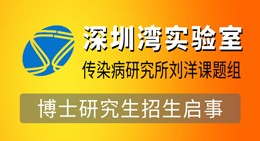

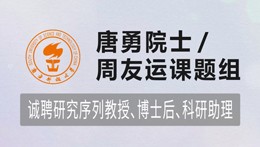
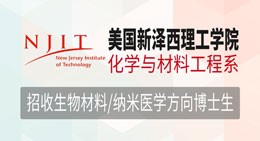
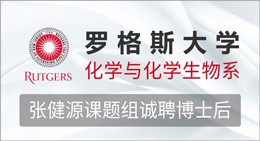
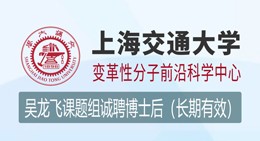





 京公网安备 11010802027423号
京公网安备 11010802027423号